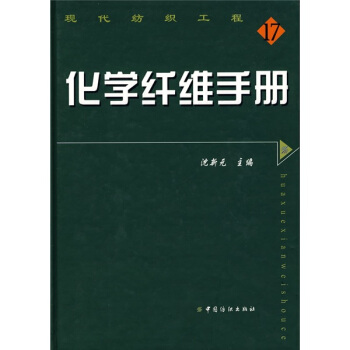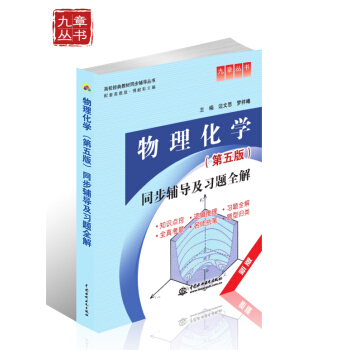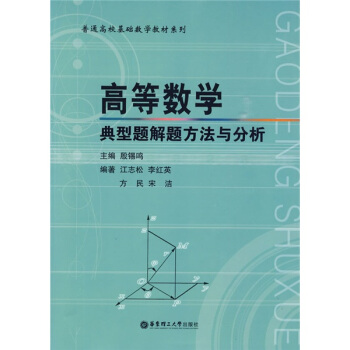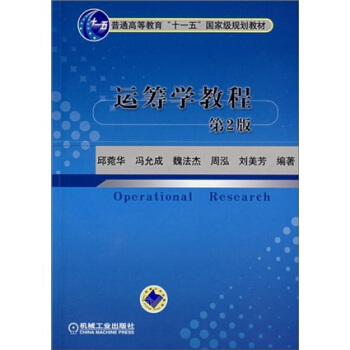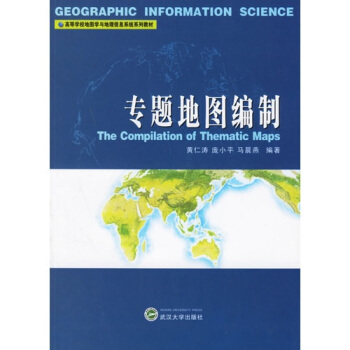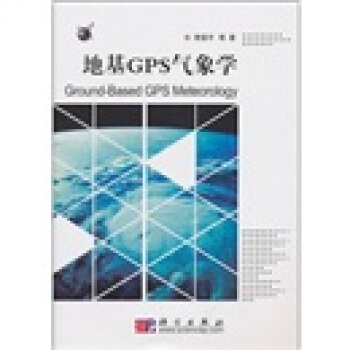![高等学校教材:高等数学基础2(英文版) [Fundamentals of Advanced Mathematics(Ⅱ)]](https://pic.tinynews.org/10002384/56722a94Ncb3189af.jpg)

具体描述
内容简介
This is the second volume of the textbook "Fundamentals of Advanced Math-ematics" written by the same authors. It includes vector algebra and analytic geometry in space, multivariable calculus, and linear ordinary differential e-quations. The intentions and features are as introduced in the preface to the first volume. We repeat here the important advice to students in the first vol-ume, as it is equally important for this second volume.In order to learn calculus, it is not enough to read the textbook as if it were a newspaper. Learning requires careful reading, working through exam-ples step by step, and solving problems. Solving problems requires more than imitation of examples. It is necessary to think about what the problem really asks and to develop a method for that particular problem.If something is still not clear after you have tried to understand it, you should ask a classmate, a more advanced student, or your teacher. If a classmate asks you a question, you may learn a great deal from explaining the answer.The following two additional remarks might be helpful to readers in u-sing the second volume.
(1) The material on linear systems of ordinary differential equations (Section 9.2) is not included in the fundamental requirements. Before study-ing it, readers will need some basic knowledge of linear algebra.
(2) Some of the material in this volume has been stated in terms of ma-trices and determinants. For readers who are not yet familiar with the basic concepts and operations for matrices and determinants we have included a brief outline in Appendix A.
目录
Chapter 5 Vector Algebra and Analytic Geometry in Space5.1 Vectors and Their Linear Operations
5.1.1 The concept of vector
5.1.2 Linear operationS on vectorS
5.1.3 Projection of vectors
5.1.4 Rectangular coordinate systems in space and components of Vectors
Exercises 5.1
5.2 Multiplicative Operations on Vectors
5.2.1 The scalar product(dot product,inner product)of two vectorS
5.2.2 The vector product(cross product,outer product)of two vectors
5.2.3 The mixed product of three vectors
Exercises 5.2
5.3 Planes and Lines in Space
5.3.1 Equations of planes
5.3.2 Position relationships between two planes
5.3.3 Equations of straight lines in space
5.3.4 Position relationships between two lines
5.3.5 Position relationships between a line and a plane
5.3.6 Distance from a point to a plane(1ine)
Exercises 5.3
5.4 Surfaces and Space Curves
5.4.1 Equations of surfaces
5.4.2 Quadric surfaces
5.4.3 Equations of space curves
Chapter 6 The Multivariable Differential Calculus and its Applications
6.1 Limits and Continuity of Multivariable Functions
6.1.1 Primary knowledge of point sets in the space Rn
6.1.2 The concept of a multivariable function
6.1.3 Limit and continuity of multivariable functions
Exercises 6.1
6.2 Partial Derivatives and Total Differentials of Multivariable Functions
6.2.1 Partial derivatives
6.2.2 Total differentials
6.2.3 Higher-order partial derivatives
6.2.4 Directional derivatives and the gradient
Exercises 6.2
6.3 Differentiation of Multivariable Composite Functions and Implicit Functions
6.3.1 Partial derivatives and total differentials of multivariable composite functions
6.3.2 Differentiation of implicit functions defined by one equation
6.3.3 Differentiation of implicit functions determined by more than one equation
Exercises 6.3
6.4 Extreme Value Problems for Multivariable Functions
6.4.1 Unrestricted extreme values
6.4.2 Global maxima and minima
6.4.3 Extreme values with constraints; The method of Lagrange multipliers
Exercises 6.4
* 6.5 Taylors Formula for Functions of Two Variables
6.5.1 Taylors formula for functions of two variables
……
Chapter 7 The Integral Calculus of Multivariable Scalar Functions and Its Applications
Chapter 8 The Integral Calculus of Multivariable Vectorvalued Functions and its Applecations in the Theory of Fields
Chapter 9 Linear Ordinary Differential Equations
Appendix A Basic Properties of Matrices and Determinants
Appendix B Answers and Hints for Exercises
精彩书摘
5.1 Vectors and Their Linear Operations5.1.1 The concept of vector
Some of the quantities in nature are determined completely by their magnitudes. For example, to record length, area, mass, temperature, etc., we can represent them by means of real numbers if an appropriate unit of measure is given. These quantities are called scalar quantities. But there are also some quantities in nature, such as displacement, velocity, and force, for which we need more information to describe them. To describe a displacement of a body we have to know how far it moves and in what direction. To describe the velocity of a body,we have to know where the body is headed as well as how fast it is going. To describe a force, we need to record the direction in which it acts as well as how large it is. These quantities that have both direction and magnitude, are called vectors. A vector is usually represented by a line segment with an arrow,a directed line segment. The length of the directed line segment represents the magnitude of the vector and the arrow points in the direction of the vector. The vector defined by the directed line segment from the initial point A to the terminal point B is written as AB.
用户评价
作为一个已经工作多年的工程师,我偶尔会回顾一下大学时期的数学知识,尤其是那些在工作中可能会用到的概念。这次偶然看到了这本《Fundamentals of Advanced Mathematics(Ⅱ)》,我被它严谨的学术风格所吸引。书中的数学语言非常地道,每一个定义、每一个定理都经过了精雕细琢,没有丝毫的含糊之处。我翻阅了其中关于级数和积分的部分,发现它对于这些概念的讲解非常深入,不仅仅停留在计算层面,更强调了其背后的理论基础和几何意义。书中还包含了一些我大学时期未曾深入了解的进阶内容,这让我感到非常惊喜。虽然我可能不会像学生那样系统地研读,但它提供了一个非常好的回顾和深化理解的平台,让我能重新审视和学习那些曾经模糊的数学概念,并从中获得新的启示。
评分坦白说,我之前对高等数学一直有些畏惧,觉得它过于抽象和枯燥。但拿到这本《Fundamentals of Advanced Mathematics(Ⅱ)》之后,我的看法有所改观。这本书的叙述方式相对比较温和,即使是第一次接触到某些高级概念,也不会让人感到过于突兀。书中有很多精彩的“旁白”,比如在某个定理的介绍之后,会简要说明它的历史背景或者在现实世界中的应用,这极大地增加了阅读的趣味性,让我感觉数学不再是孤立的符号和公式,而是与现实世界息息相关的学问。我特别留意了书中对函数图像的描绘,细节处理得非常到位,能够直观地展现函数的性质。虽然我还只是翻阅了其中的几个章节,但整体感觉非常流畅,逻辑清晰,阅读起来没有太大的障碍。这让我开始对高等数学产生了一些兴趣,或许这本书能成为我克服对数学恐惧的“破冰之旅”。
评分这本书的封面设计相当吸引人,采用了简洁而现代的风格,主色调是沉稳的蓝色,配以抽象的数学符号图案,给人一种专业、严谨又不失活力的感觉。书脊上的烫金字体清晰可见,品牌和系列标识也很醒目,摆放在书架上显得颇有分量。打开书页,纸张的质感很好,厚实且略带磨砂感,触感舒适,印刷清晰,墨色浓郁,长时间阅读也不会觉得眼睛疲劳。排版布局也非常合理,章节标题、公式、图表都划分得井井有条,留白恰到好处,使得整体视觉体验非常舒适。我尤其喜欢它在公式推导和定理证明部分的处理方式,通常会附带清晰的插图或者示意图,帮助理解抽象的概念,这一点对于初学者来说简直是福音。虽然我还没有深入阅读内容,但仅仅从装帧和排版来看,这本书就传递出一种“值得认真学习”的信号,让我对接下来的阅读充满了期待,希望能从中获得扎实的数学功底。
评分我对数学教材的评价标准一向很高,不仅要求内容准确、体系完整,更看重其教学的有效性。这本《Fundamentals of Advanced Mathematics(Ⅱ)》在这些方面都表现得相当出色。我注意到书中在讲解某些难度较大的定理时,会采用多种不同的证明方法,并对比它们的优劣,这有助于培养学生分析问题和选择最佳解决方案的能力。同时,书中对一些关键概念的反复强调和不同角度的阐释,也确保了读者能够深刻理解。我比较喜欢的一点是,书中在引入新概念时,通常会先复习与之相关的基础知识,这种循序渐进的方式,能够有效地降低学习的难度,避免学生因为基础不牢而产生挫败感。虽然我还没有机会亲自做书中的习题,但从其例题的选取和解答的详尽程度上来看,我认为这本书在教学设计上是相当用心的,能够帮助学生建立起扎实的数学基础。
评分我是一名正在准备考研的学生,目前在复习高等数学的部分。之前看过不少国内的教材,这次看到这本书的英文版,觉得是个不错的补充。这本书的语言风格非常直接,用词精准,没有太多花哨的修饰,这一点我很欣赏,毕竟在学习数学时,清晰的定义和严谨的逻辑才是最重要的。虽然有些地方的表述方式和国内教材略有不同,但仔细琢磨一下,就能体会到其独到之处。例如,书中在引入某些概念时,往往会先从一个实际的例子出发,然后逐步抽象化,这种“由具体到抽象”的讲解方式,对于理解概念的本质非常有帮助。而且,书中提供的练习题类型非常丰富,从基础的概念巩固到复杂的综合应用都有覆盖,这对于检验学习效果和提升解题能力至关重要。我打算在完成国内教材的学习后,用这本书来巩固和拓展,希望能进一步提升我的数学思维和解决问题的能力。
评分好书,印刷不错,英语数学共同提高。
评分买来备课用,希望有用。
评分作为教材不错
评分发货及物流超快,第二天到货今天家里没有牛奶了,我和妈妈晚上便去门口的苏果便利买了一箱牛奶和一点饮料。刚好,苏果便利有一台电脑坏了,于是便开启了另外一台电脑。因为开电脑和调试的时间,队伍越排越长。过了5,6分钟,有一个阿姨突然提出把键盘换了,这样就能刷卡了。我妈妈就在旁边讲了一句:“键盘不能热插拔,必须要重启。”那个阿姨好像没听见,还在坚持已见。我提出:“妈妈,我们不要在这家店卖了吧!又不是在其他地方买不到。”妈妈看了看队伍,同意了。我们把东西一放,就去了另一家百货。我提出要换另一家店不是只因为这队伍太长,还有店员素质之差。你布置了两台电脑,那你随时都要准备好换一台电脑呀,你现在让人的感觉就是你只有一台电脑能用,那一台就好像是摆设,没有一点用。我气愤不过跟妈妈说“我们去网上买吧”这样就来京东了,看到了这本书就顺便买了。
评分快递员态度很好,赞一个
评分Gooooooooooooooooooooooood
评分发货及物流超快,第二天到货今天家里没有牛奶了,我和妈妈晚上便去门口的苏果便利买了一箱牛奶和一点饮料。刚好,苏果便利有一台电脑坏了,于是便开启了另外一台电脑。因为开电脑和调试的时间,队伍越排越长。过了5,6分钟,有一个阿姨突然提出把键盘换了,这样就能刷卡了。我妈妈就在旁边讲了一句:“键盘不能热插拔,必须要重启。”那个阿姨好像没听见,还在坚持已见。我提出:“妈妈,我们不要在这家店卖了吧!又不是在其他地方买不到。”妈妈看了看队伍,同意了。我们把东西一放,就去了另一家百货。我提出要换另一家店不是只因为这队伍太长,还有店员素质之差。你布置了两台电脑,那你随时都要准备好换一台电脑呀,你现在让人的感觉就是你只有一台电脑能用,那一台就好像是摆设,没有一点用。我气愤不过跟妈妈说“我们去网上买吧”这样就来京东了,看到了这本书就顺便买了。
评分不错
评分买来备课用,希望有用。
相关图书
本站所有内容均为互联网搜索引擎提供的公开搜索信息,本站不存储任何数据与内容,任何内容与数据均与本站无关,如有需要请联系相关搜索引擎包括但不限于百度,google,bing,sogou 等
© 2025 book.tinynews.org All Rights Reserved. 静思书屋 版权所有


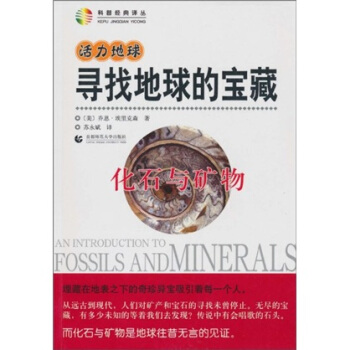

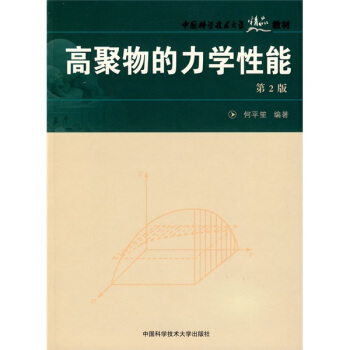
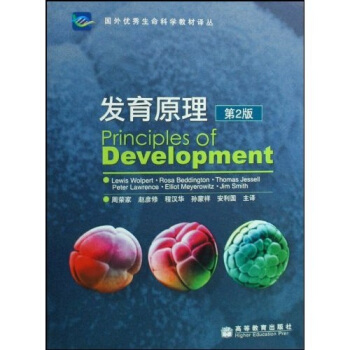
![计数组合学(第1卷) [Enumerative Combinatorics,Volume 1] pdf epub mobi 电子书 下载](https://pic.tinynews.org/10126330/57280f87N8029551f.jpg)

